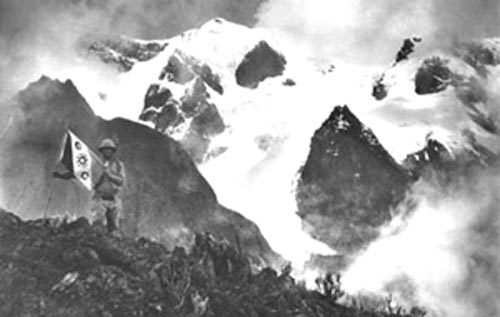 |
||
James Chapin in the Rwenzori
Mountains |
||
|
Located along the isolated border line between Uganda and the Democratic Republic of the Congo, our team of adventurers, guides, cooks and porters, with assistance from the Uganda Wildlife Authority, the Rwenzori Mountaineering Services, Abanya Rwenzori Mountaineering Association and Wildplaces Africa, will witness firsthand the impact of climate change upon the ice capped glaciers within the mountain range, the true source of the Nile River. We will also listen and learn about the effects of global warming upon the indiginous cultures from those Ugandans that live within the shadows of the Rwenzori peaks.
As the photographic evidence from several expeditions over the last century reflects since Italian Duke of Abruzzi Prince Luigi Amedeo Giuseppe Maria Ferdinando Francesco first summitted Mount Stanley's highest peak Margherita in 1906, the ice melt of the glaciers in Central Africa has excellerated at an unprecedented rate since 1994. This will be my fifth expedition to the African continent during the last twelve years and as the Expedition Leader of The SOLIO Mount Stanley Expedition I believe this will be my most important expedition to the region.
Though our past expeditions to Africa detailed the magnitude of the importance of the world focusing upon the African people in preserving both culture and wildlife, The SOLIO Mount Stanley Expedition will be our most challenging endeavour to date. Due in part to the extreme logistical challenges in an extreme environment, our team will be challenged by not only nature but the politics of humans in an era unliken to any faced by other African explorers over the ages. Indeed, we have the task to come not as cultural invaders but as men and women trying to answer questions of environmental survival. With the geniune support of the Ugandan people, we feel that our expedition will be successful.
In a time when we need to all look inward to solve the problems that outwardly face us all, please follow along with our team by way of this website as we rediscover the beauty of Uganda and her people.
Julian Monroe Fisher FRGS
Expedition Leader
The SOLIO Mount Stanley Expedition